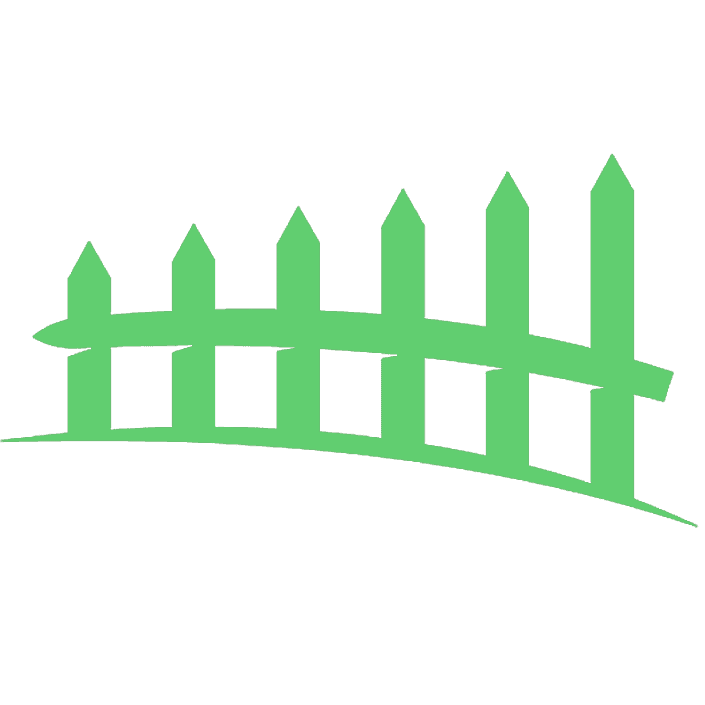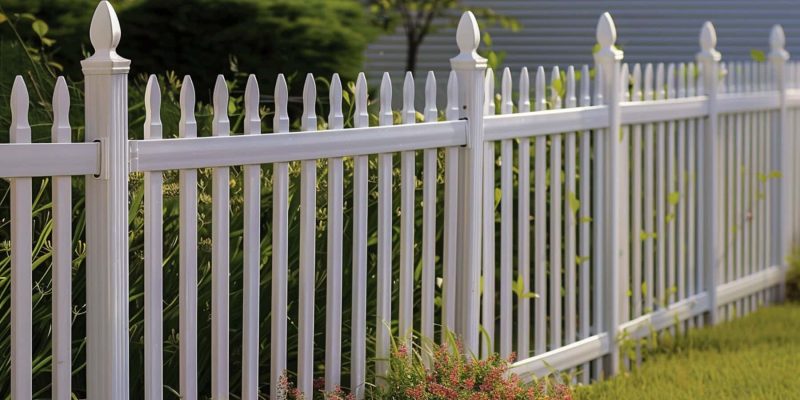When it comes to protecting your property, understanding what your home insurance covers is crucial. For many homeowners, garden fences are not just aesthetic enhancements but also provide privacy and security. In this blog, we will explore whether house insurance typically covers garden fences, delve into what specific circumstances affect coverage, and provide you with the tools to ensure your fences are protected.
Understanding Home Insurance Coverage for Garden Fences
Home insurance is designed to protect your home and other structures on your property from unexpected damages. Other structures coverage is a part of most home insurance policies, and it usually includes structures like garden fences. However, whether your fence is covered can depend on how the damage occurs.
Most policies cover your fence under events such as:
- Storm damage: High winds or falling tree limbs that damage your fence are typically covered.
- Vandalism: If someone intentionally damages your fence, your policy often protects you.
It’s important for homeowners to review their specific policy details. Insurance policies differ, and the coverage can vary based on the insurer and the type of policy you have purchased. Some policies might only cover your fence if you have opted for additional coverage, so knowing the specifics of your policy is key.
Factors Influencing Fence Coverage
When it comes to whether your garden fence is covered by your homeowner’s insurance,, several factors can significantly influence the scope and extent of the coverage. Understanding these factors can help you better assess your policy’s effectiveness in protecting this aspect of your property.
Types of Damages Covered
Your home insurance policy specifies which types of damages are covered. Most commonly, insurance will cover damage to your fence from:
Fire: If your fence is damaged due to a fire, whether originating from your property or a neighbor’s, it is generally covered under the fire peril of your home insurance.
Vandalism: Acts of vandalism, where your fence is deliberately damaged by someone, are typically covered. This ensures you can get the fence repaired or replaced without bearing the full cost.
Storm-Related Damage: In Gainesville, where storms can be frequent, storm damage to fences (e.g., from wind, falling branches) is usually covered. However, it’s important to check if there are specific clauses about storm intensity or types of storm damage covered.
…it’s important to check if there are specific clauses about storm intensity…
Insurance might not cover damages arising from:
Normal Wear and Tear: Over time, fences naturally deteriorate. This gradual damage is not covered by home insurance.
Intentional Damage: If the damage to the fence is caused intentionally by the homeowner, it will not be covered.
Poor Maintenance: Damage that results from failing to properly maintain the fence, such as not addressing termite infestation or rot, is also typically excluded.
Exclusions and Limitations
It’s crucial to be aware of what your insurance does not cover. Exclusions can vary widely but often include:
Specific Natural Disasters: Depending on your location, certain natural disasters like sinkholes or flooding may not be covered unless you have additional coverage specific to these risks.
Limit of Coverage: Some policies have a limit on the amount they will pay for damage to “other structures” like fences, which might be a percentage of the total home coverage.
Impact of Policy Type
The specifics of what your fence coverage includes can also depend on the type of home insurance policy you have:
HO-3 (Special Form Policy): This is the most common type of homeowners policy. It generally covers all direct physical losses to the structure of your home except for those specifically excluded. For fences, it typically covers damages listed under covered perils.
HO-5 (Comprehensive Form Policy): This policy offers broader coverage and includes more perils than the HO-3. It’s a more expensive option but could be beneficial if you seek extensive coverage for structures like garden fences.
By understanding these factors, you can better navigate the specifics of your home insurance policy to ensure that your garden fence in Gainesville is adequately covered against potential damages. This knowledge not only helps in making informed decisions about choosing or modifying your policy but also prepares you for effective claim filing if damage occurs.
How to Check if Your Fence is Covered
To determine if your garden fence is covered by your house insurance, there are several proactive steps you can take. These steps will not only clarify the coverage details but also help you understand the specifics of your policy in relation to other structures like fences.
Review Your Insurance Policy
The first and most important step is to thoroughly review your insurance policy documents. These documents contain all the details about what is covered under your policy, including specific clauses related to garden fences. Here’s how you can effectively review your policy:
Look for the Declarations Page: This page summarizes your coverage, including the limits and any specific endorsements or exclusions that apply to garden fences.
Check the Coverage for Other Structures Section: Most home insurance policies include a section specifically detailing coverage for structures that are not attached to the main home, such as fences, sheds, and garages.
Identify Covered Perils: Ensure you understand which perils are covered under your policy—such as fire, theft, or storm damage—and check if there are specific exclusions that might affect your fence.
Speak to Your Insurance Agent
If your policy documents are unclear or if you have specific questions about your coverage, the next step is to consult your insurance agent. Here’s how an insurance agent can assist you:
Clarification on Coverage: An agent can provide clear explanations about complex terms and conditions mentioned in your policy. They can specify whether your garden fence is covered and under what circumstances.
Discuss Policy Adjustments: If your current coverage is not adequate for your needs, your agent can help you adjust your policy to ensure better protection for your fence. This might include increasing your coverage limits or adding specific endorsements.
Provide Advice on Filing Claims: In case of damage, your agent can guide you through the claims process, helping to ensure that you have all the necessary documentation and understand the steps involved.
RECOMMENDATION
Review your policy and speak with your agent proactively to understand how your garden fence is covered by your house insurance. This prepares you for potential damages and ensures you make the most of your policy.
Common Issues and Troubleshooting
When dealing with insurance coverage for garden fences, homeowners often face several common issues. Here’s how you can navigate these challenges:
Claim Filing Process: If your fence has been damaged, report the damage to your insurance company as soon as possible. Provide them with photographs of the damage and any estimates for repair. The clearer and more detailed your documentation, the smoother the claims process tends to be.
Dispute Resolution: Sometimes, you might disagree with your insurance provider’s decision on your claim. If this happens, review your policy to understand your rights. You can also ask for a second opinion or an independent appraisal. Communicating clearly and keeping detailed records of all interactions can help resolve disputes effectively.
Preventative Measures: To minimize the risk of damage to your fence and potential disputes with your insurance, perform regular maintenance on your fence. Check for and repair any damages like loose panels or posts that could be worsened by storms or other events. Also, consider using materials and construction methods that are more resistant to the local climate and environmental conditions in Gainesville.
These steps not only help in ensuring that you are prepared to handle insurance claims but also in reducing the likelihood of damage in the first place.
Frequently Asked Questions
When it comes to garden fence coverage under home insurance, several questions commonly arise. Here are answers to some of the most frequent inquiries:
Is fence damage from a fallen tree covered?
Yes, if a tree falls due to a covered peril like a storm and damages your fence, it is typically covered. However, if the tree was already rotting and fell due to neglect, it might not be.
Does the age of the fence affect insurance coverage?
The age of the fence can affect the amount you are reimbursed. Older fences may be subject to depreciation, which means you might not get the full replacement cost covered.
What if only part of the fence is damaged?
Insurance usually covers the repair or replacement of only the damaged part of the fence. However, the aesthetics of the fence might not be consistent if the materials used in the repairs differ from the original.
Can I increase coverage for my garden fence?
Yes, you can usually increase coverage for your fence by adjusting your policy or purchasing additional coverage. Talk to your insurance agent about options that fit your needs.
Conclusion
Understanding whether your garden fence is covered by house insurance requires a good grasp of your home insurance policy specifics. In Gainesville, it’s crucial to ensure that your coverage aligns with local risks like storms and to regularly maintain your fencing. By staying informed and proactive, you can navigate the complexities of insurance and keep your property well-protected.

